The 1861 census threw open a window on a society struggling with poverty and unsanitary living conditions. It revealed a bleak picture of life in Scotland, particularly in its largest cities and the Highlands.
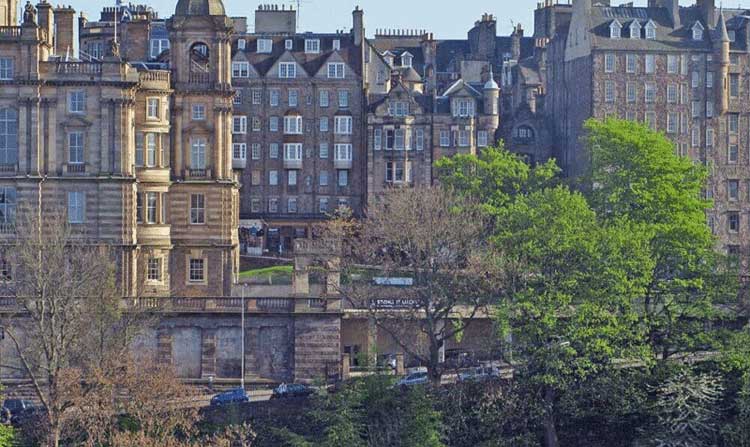
Today thousands of visitors flock to Edinburgh’s Old Town to explore its historic sites. But turn the clock back to 1861, and the Scottish census return of that year, and you’ll find a bleak picture of life in the Old Town.
What were conditions like more than 150 years ago?
In Britain, regular census taking, administered by the government, began in 1801. Since then one has been held every ten years except 1941.
In 1861, William Pitt Dundas, the new and first Registrar General for Scotland, took responsibility for conducting the census in Scotland.
He was a man with powerful family and political connections but in terms of appropriate experience, Pitt Dundas might not have been the best candidate for the job.
Pitt Dundas and his Superintendent of Statistics, Dr James Stark faced some difficulties when preparing for the census.
The problems ranged from a lack of office staff, the questionable quality of some of the enumerators, the low levels of literacy in several households and the inability to speak English in some parts of the Highlands.
Despite all of this, the Scottish census of 1861 was completed as planned on the night of Sunday 7 April.
The first examination of any census report, while allowing those in government to plan for the future, may be considered dull and uninspiring, a mere collection of statistics.
However, a closer look reveals not dry and dusty information but the fascinating and, in some cases, unimaginably difficult, story of how people lived their lives.
the 1861 census revealed A bleak picture of life in Scotland
Even before the census brought some official recognition of the vastly overcrowded and unhealthy conditions, the problems in Edinburgh’s Old Town and parts of Glasgow, particularly around the High Street and other areas close to the cathedral, were already well known to social reformers of the day, the medical profession and some of the city fathers.
While acknowledging the advantages of statistical evidence it’s worth mentioning the Scottish Registration Act of 1854, which finally forced people into officially registering births marriages and deaths (including the cause) in Scotland. Added to the 1861 census information a more complete demographic picture of Scotland was emerging.
Faculties impaired by drinking in Edinburgh Old Town
Previous attempts at recording births, marriages and deaths were haphazard and chaotic. An entry, in response to Scotland’s first attempt at demographic mapping, in an Edinburgh publication of 1779 said “The register of burials is kept by people whose faculties are impaired by drinking, who forget today what was done yesterday.”
An eminent member of the Royal College of Surgeons of Edinburgh and brother-in-law to the Lord Advocate, Dr George William Bell had published two powerfully evocative pamphlets revealing the squalid and overcrowded conditions of the city’s wynds (alleys) – Day and Night in the Wynds of Edinburgh (1849) and Blackfriars’ Wynd Analyzed (1850).
His work, which made a direct correlation between the filthy housing conditions, excessive drinking, prostitution and wife beating, left little doubt as to the seriousness of the problem but forced no tangible change.
The Builder’s Journal of 1861
If further evidence was required to confirm the lack of progress, the Builder’s Journal of 1861 carried this description (below) of one of the wynds in Edinburgh Old Town.
“We devoutly believe that no smell in Europe or Asia… can equal in depth and intensity, in concentration and power the diabolical combination of sulphurated hydrogen we came across one evening in a place called Todrick’s Wynd, close to the Royal Mile.”
Builder’s Journal
Between the censuses of 1801 and 1851 Edinburgh had seen a huge influx of mainly working-class people, increasing the city’s population from 83,000 to 202,000.
Although the development of Edinburgh’s New Town, between 1767 and 1890, with its elegant neoclassical architecture, attracted most of the city’s ‘genteel’ residents it did little to alleviate the overcrowding they left behind.
The 1861 census revealed that 226,000 families in Scotland lived in one-roomed ‘houses’, 8,000 of which had no window.
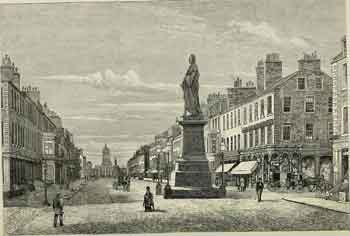
It also showed that one-roomed homes made up 34% of housing stock in Scotland, a further 37% had only two rooms. It meant that 71% of Scottish homes had two rooms or less and housed sixty four percent of the population.
In Scotland’s capital, while it could be as high as 15, an average of five people lived in each one-roomed house which may have been only 14 feet by 11.5 feet. With no fresh running water to drink or wash in and no toilets, outbreaks of Typhus and Cholera were common.
Although the Old Town conditions were universally dreadful, the Tron and Canongate areas were particularly bad, recording population densities of 353 and 238 people per acre while only eight miles away leafy Morningside had only eight people per acre.
While the census report generated some frightening statistics, comments from Pitt Dundas shed light on the difficulties faced by the enumerators in their search for accuracy. For example, considerable debate took place when trying to define what actually constituted a house.
Edinburgh tenements were divided and subdivided
The previous London driven census was based on the English definition but the Edinburgh tenements, which were divided and sometimes subdivided didn’t fit the earlier model making it difficult for enumerators to form an accurate picture.
There was also difficulty, particularly in the Highlands and Islands, with the traditional ‘but and ben’ (small cottage) if it only had a single skylight, did that constitute a window? Or if an opening in the wall was not glazed but covered with a hinged door, did that constitute a window?
Other issues in the Highlands quickly surfaced. School attendance for example.
The census asked for information about the number of children who had attended school in the week preceding 7 April. On Unst, the most northerly island in Scotland, the answer to that question would have been none, for in the words of the local registrar, “most of the children who have attended school during winter leave for the labours of the field [during this week].”
This was only one of a number of areas that Pitt Dundas was forced to compromise,. Consequently, it’s now generally accepted that figures for school attendance in 1861 are incorrect.
Scottish Board of Education
However, despite the educational inaccuracies, it was part of a process of sharper focus on Scottish education which resulted in 1872 in the new Scottish Education Act and the creation of the Scottish Board of Education and compulsory attendance for all children between five and thirteen years old.
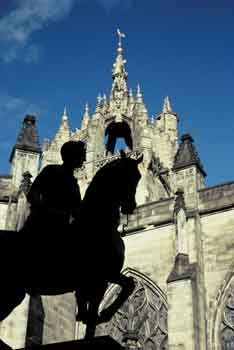
The questions regarding the number of windows in each room and the number of families who lived in each house, which could be a single room, were a new feature of the 1861 census form and a comment added to the census report, written by Pitt Dundas and Stark highlighted the value of this new information. “The importance of such statistics, in a sanitary point of view, cannot be underestimated… social reformers will look with the greatest eagerness and profit…the sanitary reformers in Scotland have now procured a document of inestimable value…”
An incident in 1861, the same year as the census, added to the pressure for change. In the early hours of 24 November, a tenement block on Edinburgh’s High Street collapsed killing 35 people and injuring many more.
As a result of the tragedy and the demand for better health provision, Sir Henry Duncan Littlejohn was appointed the following year as Edinburgh’s first Medical Officer of Health, a post he was to occupy for nearly half a century.
Report on the Sanitary Conditions of Edinburgh
Littlejohn’s initial research into conditions in the Old Town covered 19 sanitary districts (different from census districts). It led in 1865 to the publication of his damming Report on the Sanitary Conditions of Edinburgh, since described as, “classic in the literature of public health.”
His findings were unequivocal: the worst areas should be demolished and new streets and accommodation built, overcrowding must be reduced by limiting the number of people in each apartment, gas and water supplies should be installed and there should be regular cleaning of the common stair.
Littlejohn said, “The condition of the Old Town and the necessity of remedying it, about which there cannot be any diversity of opinion, should be taken up in earnest.”
With officially recorded statistics for Births, Marriages and Deaths, Littlejohn could now evaluate mortality rates. His comparison in two of the most deprived districts showed, at best (St Giles‘) 28.8 per 1000 and at worst (Abbey) 37.1 per thousand.
Edinburgh City Improvement Act
With Littlejohn’s report adding further authority to the census statistics and the earlier work by Dr Bell, Lord Provost William Chambers now had the ammunition to force through the Edinburgh City Improvement Act of 1867.
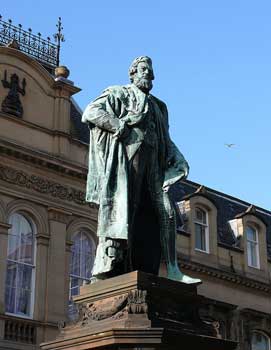
Although curtailed to some extent by the lack of finance, the Act ensured great changes took place in the Old Town with many of the worst areas being swept away and replaced with ten new streets.
In order to gauge the effect of the 1867 Edinburgh City Improvement Act, local researcher Val Wilson examined the census data from 1861 and 1881 with particular emphasis on the Old Town areas of Blackfriars’ Wynd and Todrick’s Wynd.
While a detailed analysis of her work is outside the scope of this short article, she has concluded that the new Act of 1867 did result in better living conditions for the residents of these areas. The new wider streets were the obvious changes but within the tenements, the number of families living in a single room with a window and the average number of people per room had dropped considerably.
New buildings also showed some improvements, for example, an examination of the plans of a new tenement building in Blackfriars Street (1871) showed that although rooms were still very small some of the units now included kitchens and a number of communal toilets had been included in the design.
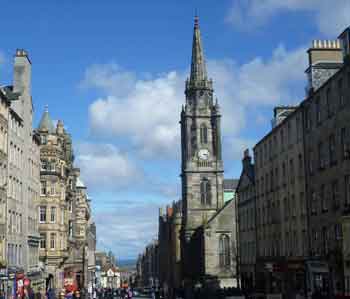
Despite public health improvements in both of Scotland’s largest cities mortality rates continued to be much higher than those in England.
The British Medical Journal (BMJ) of October 1874 revealed the average mortality (from seven principal infectious diseases) rate of England’s 18 largest cities was 4.8 per thousand.
The BMJ also published figures from other parts of Europe, North Africa and the United States. New York registered 29 deaths in every thousand living and Alexandria a staggering 57 per thousand. In Edinburgh, the death rate was 18 per thousand and Glasgow registered 26 per thousand.
Edinburgh World Heritage Site
The Old and New Towns of Edinburgh, now (jointly) a World Heritage Site, is described by UNESCO as a “harmonious juxtaposition of two contrasting historic areas.” Citizens of 19th century Blackfriars’ Wynd and Todrick’s Wynd would certainly recognise the contrast but it’s doubtful if they ever saw any harmony between Old and New.
More Scottish history articles
While conditions in Edinburgh’s Old Town were particularly bad, other Scottish cities faced similar problems. In 1861, Dundee’s 91,664 inhabitants had only five WCs and three of them were in hotels. Clean water was almost non-existent, none of it was piped, all had to be drawn from wells, the biggest of which was heavily contaminated by the city’s main slaughterhouse.
Conditions in Glasgow
Glasgow too had its horror stories, only two decades before Scotland’s first census the city’s chief constable had remarked that “in the very centre of the city there is an accumulated mass of squalid wretchedness which is probably unequalled in any other town of the British dominions.” By 1861 with the population rising to 395,503, conditions had barely improved.
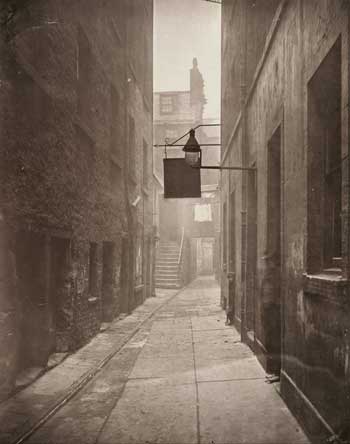
In the same way as Edinburgh, the Glasgow medical establishment and groups of social reformers were well aware of the city’s appalling problems before the 1861 census added an official demographic understanding.
Glasgow: clean drinking water
However, in the provision of clean drinking water, Glasgow was ahead of the game.
In 1859 the new scheme for drawing water From Loch Katrine, about 50 miles away in the southern Highlands was opened by Queen Victoria.
It allowed fresh water to be piped, not directly into houses but to standpipes in the closes (entrance to a tenement building) of some of the worst slum dwellings. Within a decade Aberdeen and Dundee had followed Glasgow’s lead.
The momentum for change in Glasgow was gathering pace. In the year following the census, a considerable number of sanitary inspectors and medical officers of health were employed and slowly improvements were made.
Professor T M Devine makes the point that Medical Officers of Health in this era were a formidable group and included J B Russell in Glasgow, Mathew Hay in Aberdeen and Henry Littlejohn in Edinburgh.
He said “They led the battle for cleanliness, drainage, public parks, civic fever hospitals, better housing and collections of statistics to the continual embarrassment of the city fathers.”
The Glasgow Improvements Act of 1866 allowed the council to establish the City Improvement Trust, another weapon in the city’s armoury, empowered to purchase and demolish slum property in order to create wider streets and more open spaces.
However, while it demolished over 15,000 slum houses between 1871 and 1874 there were insufficient replacement homes built and had the effect of simply moving the overcrowding to another area.
- Find further information on the 1861 census from the National Records of Scotland.